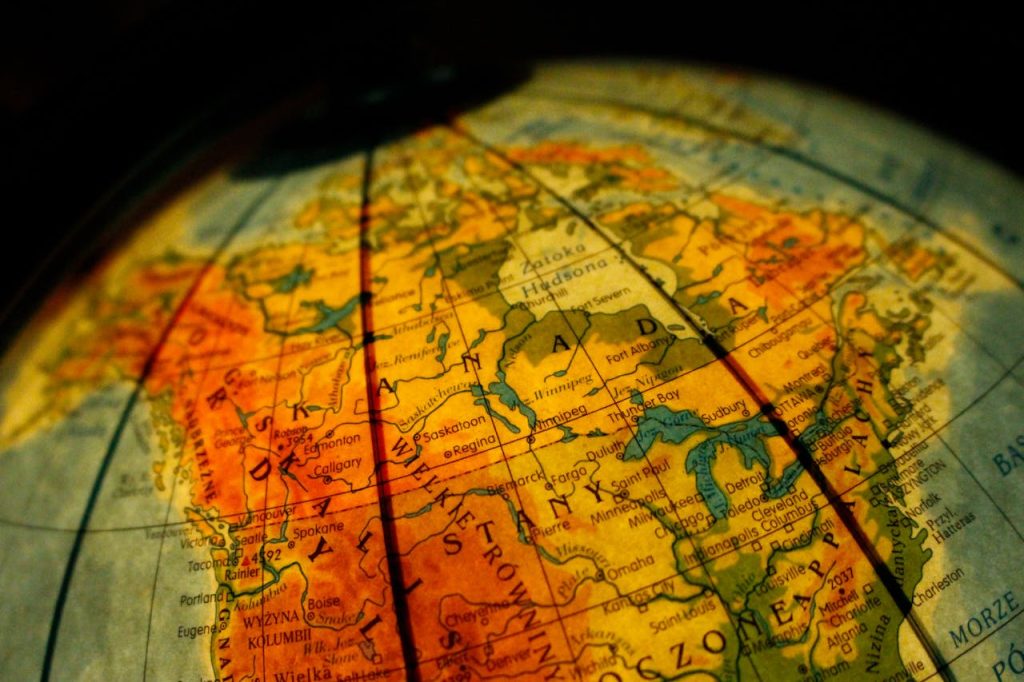Your cart is currently empty!
Trump Claims Tariffs Ended Six Wars: The Politics Behind His Latest Foreign Policy Assertion

Former U.S. President Donald Trump’s latest remarks have drawn renewed attention to his long-standing economic and foreign policy strategies. In a recent press conference, Trump credited his use of tariffs with ending what he described as “most” of the seven wars he claims to have resolved since returning to office. The comments highlight the former president’s continued efforts to connect his trade policies to global stability which is a claim that blends his signature economic populism with an expansive interpretation of international diplomacy.

Tariffs as a Tool for Peace
Trump portrayed tariffs as a direct mechanism of peace and leverage. Speaking from the Oval Office with FBI Director Kash Patel and senior Department of Justice officials present, he moved from a question about China to a full defense of tariffs as essential to national defense. “If we didn’t have tariffs, we would be exposed as being a nothing,” he said. “We would have no defence … if we don’t have tariffs, we’re not going to have national security.”

Trump then claimed that tariffs were not only economic policy but also instruments of diplomacy capable of stopping wars. “Of the eight wars, I was saying seven of the eight wars, I would say tariffs are directly responsible for me ending six of them, five or six. Without the tariffs, you have wars raging all over the world,” he said. As an example, he recounted a phone call involving India and Pakistan, in which he said he threatened to impose a 200 percent tariff if fighting continued. “And then I heard that they’re shooting at each other, and I said during one of my conversations, are you guys going to go to war? If you go to war. I’m going to put a 200 per cent tariff. I’m going to stop you from doing any business in the United States. I said it to both of them. Within 24 hours, the war ended. That would have been a nuclear war,” Trump said.
His anecdote presented tariffs as immediate, unilateral tools of deterrence that emphasized his personal intervention and authority rather than the structural realities of trade or diplomacy. The narrative placed him at the center of events, casting his tariff threats as decisive measures that neutralized potential conflict.
An independent assessment by FactCheck.org challenged the factual basis of these claims. The outlet reviewed Trump’s repeated assertions that tariffs had ended multiple wars and found no verifiable evidence to support a causal relationship between his trade policies and global de-escalations. He said in his statement, “The seven wars I stopped, four of them were because of the fact that I had tariffs and trade … They all gave up,” which prompted experts to view such claims as highly overstated. Analysts interviewed emphasized that while economic pressure can complement diplomatic efforts, it rarely serves as a standalone mechanism for conflict resolution. Their findings underscored how Trump’s remarks function more as a reflection of his political narrative, one where financial assertiveness is framed as proof of global leadership, than as a verifiable record of peacekeeping achievements.
The Economics Behind the Rhetoric
Trump’s statements once again raise a persistent point of contention: who actually pays for tariffs. Economists broadly agree that tariffs are paid by domestic importers and, ultimately, consumers, not foreign governments. The idea that tariffs serve as a peacekeeping mechanism, while rhetorically powerful, remains largely unsubstantiated in mainstream economic research.
According to the nonpartisan Peterson Institute for International Economics, tariffs tend to act as taxes on domestic buyers, often triggering retaliatory measures from trading partners. In practice, this can lead to higher consumer prices and increased market uncertainty. Yet for Trump, tariffs have always represented more than fiscal instruments; they are political tools. His claim that tariffs generate “the power to keep peace” reflects his broader view that economic might can be wielded as deterrence.

During his presidency, Trump’s tariffs, particularly against China, became central to his “America First” platform. His trade war with Beijing spanned technology, manufacturing, and agricultural sectors, creating waves of both domestic support and criticism. For his supporters, tariffs symbolized strength and self-reliance; for critics, they represented isolationism and economic strain.
Foreign Policy Through an Economic Lens
While Trump’s claim of ending six wars through tariffs has not been independently verified, it reflects a consistent pattern in his worldview: that financial leverage equates to diplomatic strength. This view aligns with his approach to NATO funding, North Korea negotiations, and relations with Iran, where he often framed economic coercion as a substitute for military engagement.
In this way, Trump’s narrative merges two historically distinct arenas, economic protectionism and international peacekeeping. His anecdote about pressuring India and Pakistan with trade penalties illustrates his belief in “transactional diplomacy,” that is, resolving geopolitical tension through economic deterrence rather than conventional diplomacy or multilateral engagement.

Experts remain skeptical. As foreign policy analyst Dr. Evelyn Farkas told Reuters in a 2023 interview on similar claims, “Economic tools are important for leverage, but conflating tariffs with peacekeeping oversimplifies complex regional dynamics.”
The Politics of the Statement
Trump’s rhetoric also plays into a broader narrative as he seeks to reaffirm his image as a dealmaker capable of controlling global outcomes. His framing of tariffs as instruments of peace offers a dual political advantage: reinforcing his credentials as both an economic nationalist and a peace-oriented leader.
From a communications standpoint, the statement serves a dual purpose. It reasserts his populist message, that strength and independence stem from domestic economic control, while positioning him as a stabilizing force in contrast to what he portrays as chaotic international leadership.

For political observers, the timing of such remarks is notable. With U.S.–China tensions and Middle East instability again dominating headlines, Trump’s emphasis on tariffs as a deterrent mechanism appears strategically designed to remind voters of his past claims of “peace through strength.”
Economics, Power, and Perception
Trump’s statements invite a deeper examination of how power is understood in the twenty-first century, where the boundaries between economic influence, diplomacy, and security have grown increasingly intertwined. His narrative frames economic control as the modern equivalent of military strength, implying that prosperity and strategic leverage can substitute for armed intervention. This outlook mirrors a broader shift in global politics, where trade agreements, sanctions, and financial regulations serve as tools of persuasion and pressure on the world stage.
The attraction of this argument lies in its simplicity. By equating tariffs with deterrence, Trump presents a version of leadership rooted in economic dominance and self-sufficiency, qualities that resonate with audiences weary of prolonged military conflicts. Yet this approach also reflects the power of perception in governance. Leaders who can successfully link economic policy to national pride often gain influence beyond their immediate achievements. In this sense, Trump’s remarks are less about empirical accuracy and more about shaping an enduring image of control through commerce.
What emerges is a study in political storytelling. The notion that a single policy mechanism could end multiple wars reveals how rhetoric and symbolism can define political identity as effectively as legislation or treaties. It also illustrates how economic nationalism continues to function as a narrative of reassurance to domestic audiences, promising strength without the human and financial cost of war.
Ultimately, Trump’s framing of tariffs as peacekeeping tools underscores a deeper truth about contemporary politics: influence increasingly depends on perception as much as policy. The ability to transform financial decisions into symbols of stability and security remains a defining feature of modern leadership, one that continues to shape how citizens interpret power in an interconnected world.
The Legacy of a Claim
Trump’s claim that tariffs ended six wars may not withstand factual scrutiny, but it reinforces his enduring political brand as the self-styled negotiator who wields economics as a weapon of peace. His remarks, though controversial, highlight the evolution of global power where economic strength increasingly defines stability and security. The assertion also underscores his ability to blend economic policy with national identity, presenting himself as a leader who prefers negotiation and leverage over confrontation.
Beyond its factual debate, the claim carries symbolic weight. It reflects how political figures use narrative to shape perception and sustain influence. For Trump, the idea that tariffs can function as peacekeeping tools strengthens his image as a decisive actor who governs through conviction and force of personality. This rhetorical approach allows him to transform complex geopolitical issues into accessible demonstrations of leadership, linking fiscal control to moral authority.

As the Supreme Court evaluates the limits of his tariff powers, the controversy serves as a reminder of how narrative power shapes modern governance. Trump’s statement is less a matter of policy accuracy than an example of political storytelling in action. It encapsulates his belief that commerce, control, and communication are interdependent forces that define leadership in the global arena, leaving a legacy where economic might and perception intertwine in the pursuit of political dominance.
